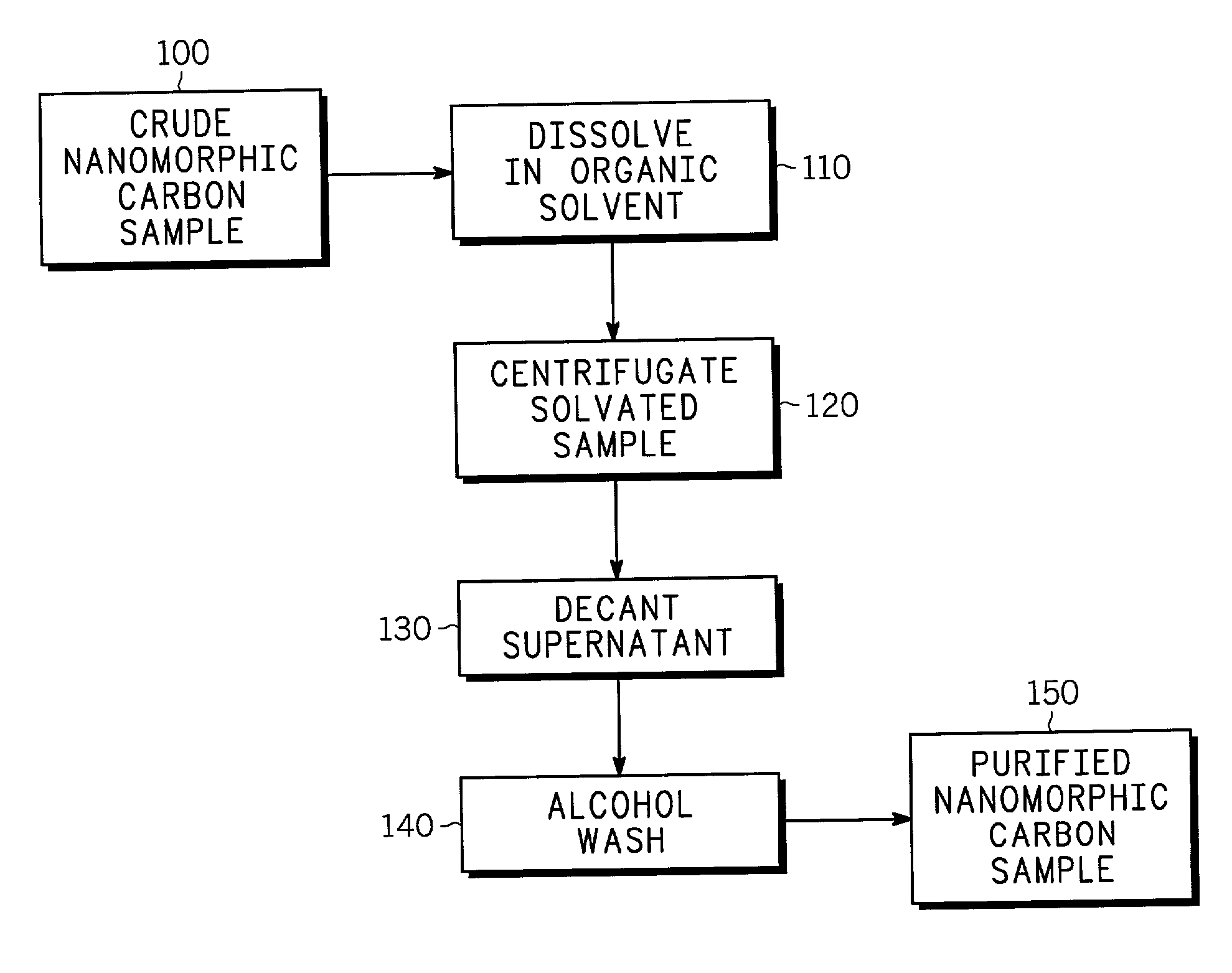Method for non-reactive separation of nanomorphic carbon species
a carbon species, non-reactive technology, applied in wet separation, nanostructure manufacturing, chemistry apparatus and processes, etc., can solve the problems of non-reactive purification, cost-effective and efficient non-resolution, and largely unresolved problems
- Summary
- Abstract
- Description
- Claims
- Application Information
AI Technical Summary
Benefits of technology
Problems solved by technology
Method used
Image
Examples
Embodiment Construction
[0013]The following descriptions are of exemplary embodiments of the invention and the inventor's conception of the best mode and are not intended to limit the scope, applicability or configuration of the invention in any way. Rather, the following description is intended to provide convenient illustrations for implementing various embodiments of the invention. As will become apparent, changes may be made in the function and / or arrangement of any of the elements described in the disclosed exemplary embodiments without departing from the spirit and scope of the invention.
[0014]As used herein, the terms “cleaning”, “separating”, “partition”, “purifying” and any variations thereof, may generally be used interchangeably and may be understood to generally comprise controlling or otherwise modifying the spatial and / or temporal distribution function of a first chemical species with respect to a second chemical species. Moreover, the terms “clean”, “separate”, “partition” and “purify”, or a...
PUM
| Property | Measurement | Unit |
|---|---|---|
| diameters | aaaaa | aaaaa |
| diameters | aaaaa | aaaaa |
| diameters | aaaaa | aaaaa |
Abstract
Description
Claims
Application Information
 Login to View More
Login to View More - R&D
- Intellectual Property
- Life Sciences
- Materials
- Tech Scout
- Unparalleled Data Quality
- Higher Quality Content
- 60% Fewer Hallucinations
Browse by: Latest US Patents, China's latest patents, Technical Efficacy Thesaurus, Application Domain, Technology Topic, Popular Technical Reports.
© 2025 PatSnap. All rights reserved.Legal|Privacy policy|Modern Slavery Act Transparency Statement|Sitemap|About US| Contact US: help@patsnap.com



